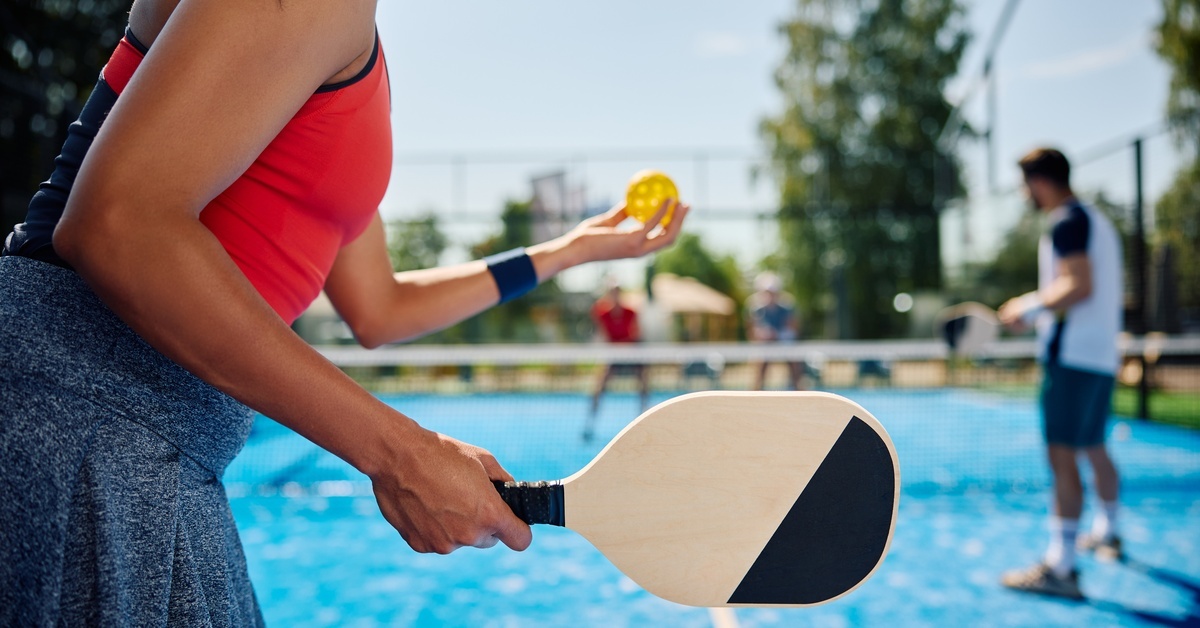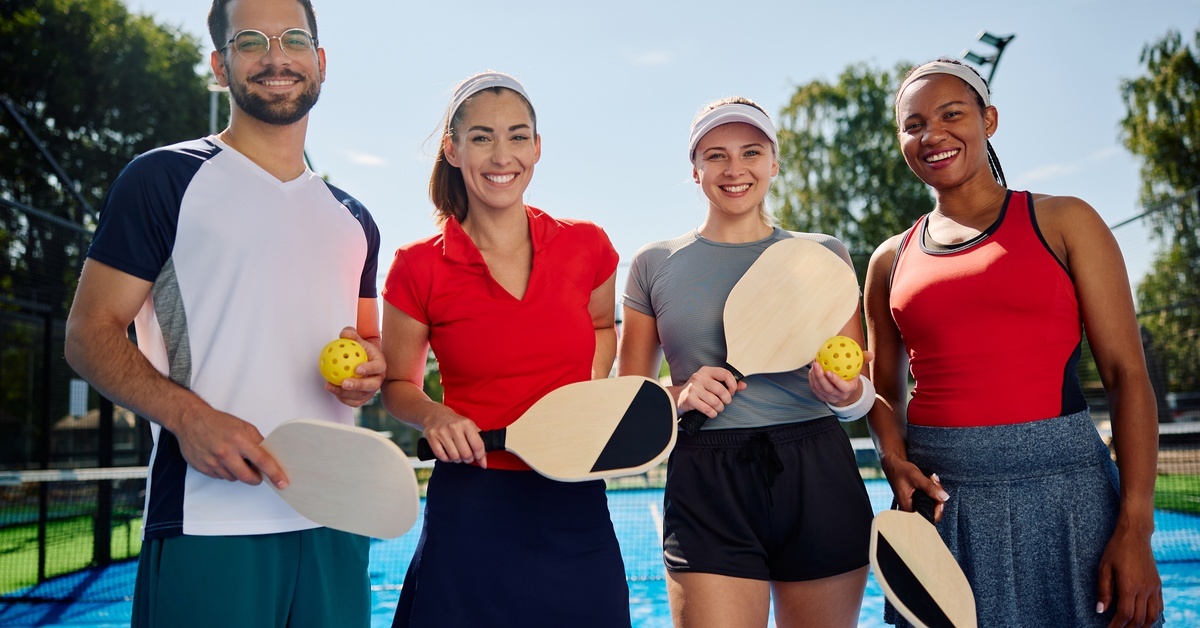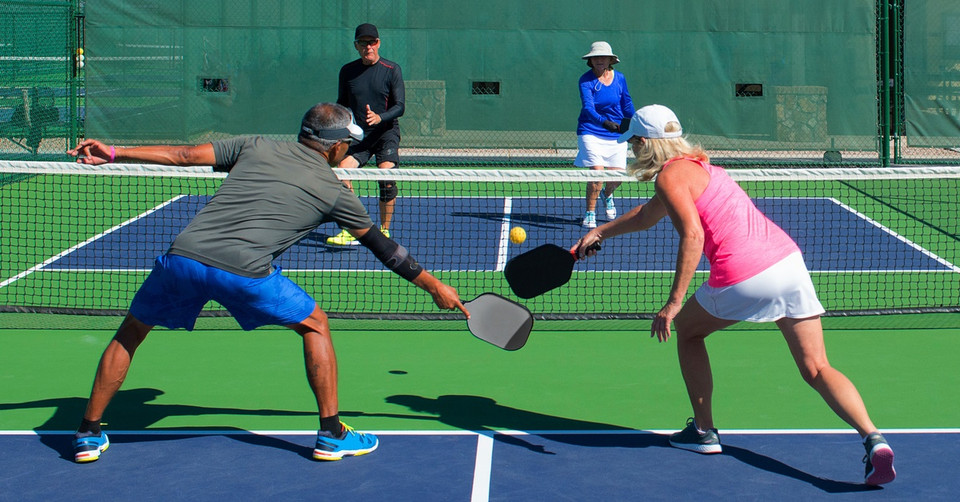As a pickleball court owner, understanding the ins and outs of the game is just as important as keeping your courts in top shape. One of the most common topics players and newcomers bring up is the difference between singles and doubles play.
The two formats share a lot of similarities, but they also have distinct strategies, rules, and pacing that set them apart. In this post, we’ll walk through the main differences between singles and doubles pickleball, so you can help players choose the right game for their skill level and style.
1. Team Structure and Player Movement
Singles pickleball involves just two players—one on each side of the court. This format requires players to cover the entire width and length of their side alone.
Movement is constant, and players must stay on their toes to respond to fast-paced shots, deep returns, and quick volleys. Singles play demands a lot of stamina and agility since one person must handle every shot.
Meanwhile, two players are on each side during doubles pickleball. Teammates work together to cover the court, dividing responsibilities between left and right halves.
Doubles players don’t have to move as much vertically because one player is always at the baseline or net to cover. That means doubles tends to favor placement and teamwork over raw speed.
Players can communicate to set up smart strategies, like stacking on the serve or switching positions after a return. This division of labor makes doubles more approachable for beginners and those who prefer a more social game.
For court owners, singles play usually means more court wear because of the increased movement. Keeping nets tight, surface lines clear, and paddles accessible is good practice for both formats, but doubles games are often easier on the court. Encouraging both options keeps your courts active and your customers engaged.
2. Serving Rules and Strategies

Serving is a key area where singles and doubles pickleball diverge. In singles play, each player serves from the right-hand service area with an even score and from the left-hand service area with an odd score.
The server keeps serving until they lose a point, and then the service goes to the opponent. Players should pay close attention to where they serve from and where they aim because there are fewer players to return the ball.
In doubles, serving gets a little more complex. Each team has two chances per turn, one for each player. before service switches to the other team. The player on the right side always starts serving, and they keep serving until they lose a rally.
Then the serve goes to their partner, who also continues until losing a rally. Only after both players have served and lost does the ball go to the other team.
There’s also the well-known “double bounce” rule that applies in both singles and doubles: the ball must bounce once on each side before volleys can happen. But in doubles, this rule has a much bigger impact because positioning is more strategic.
For court owners, clear signage and diagrams of these serving rules near your courts can make life much easier for players, especially newcomers. Consider adding laminated posters or signs explaining the rotation and service rules for singles and doubles play. It keeps games flowing smoothly and minimizes service disputes.
3. Court Positioning and Strategy
Singles pickleball is all about covering space efficiently. Players must master lateral movement, quick sprints to the baseline, and sharp reflexes at the kitchen line.
Since players have no one else to rely on, they should focus on hitting deep serves and precise shots to move their opponent around and create openings. Drop shots, passing shots, and quick dinks are essential tools in singles play.
Doubles pickleball is much more about teamwork and coordination. Both players try to move up to the kitchen line as quickly as possible and maintain that position. From there, they work as a unit, covering angles and blocking passing shots.
Communication is key—calling “mine” or “yours” avoids confusion, and players must know when to switch or stack to keep the strongest player in the best position. Doubles players often play a slower, more methodical game at the net, emphasizing patience and consistency.
For your courts, providing benches, water stations, and shade can help players stay fresh during longer, more tactical doubles games. Singles players may benefit from having easy access to towels and extra water, given the high energy demands of covering the court solo.
4. Scoring Differences
Singles scoring is relatively straightforward. Each player can only score when serving, and players will typically play games to 11 points, win by two.
Players announce the score as server’s score followed by receiver’s score. For example, if the server has 6 points and the receiver has 4, the server calls “6-4” before serving.
In doubles, the scoring adds a third number to account for the person serving. Players will call out the server’s score, the receiver’s score, and then the server number (1 or 2).
For example: “7-5-2” means the serving team has 7, the opponents have 5, and it’s the second server’s turn. This extra detail can confuse newcomers at first, so as a court owner, you might want to offer printed scorecards or cheat sheets that players can reference.
5. Social vs. Competitive Atmosphere

Singles pickleball attracts players who enjoy testing their endurance, speed, and strategy in a one-on-one setting. While the social aspect of the sport is still prevalent, serious players often opt for singles as a way to sharpen their skills or get a solid workout.
Doubles tends to have a lighter, more social vibe. Since players can share the workload, there’s more opportunity for conversation, laughter, and camaraderie during games.
Doubles is especially popular among recreational players, older adults, and anyone looking for a fun, engaging way to stay active without overexertion. Many local clubs and leagues organize doubles tournaments because it accommodates more players and fosters a strong sense of community.
As a court owner, offering both singles and doubles-friendly setups is a smart move. Post open play schedules for each format, so players know when they can drop in for a singles challenge or a casual doubles match.
Help Players Enjoy Both Sides of the Game
Now that you know the main differences between singles and doubles pickleball, you can better serve your players and keep your courts buzzing with activity. As a court owner, having the right pickleball court supplies and a welcoming atmosphere will help players enjoy whichever style suits them best.
Whether they want a serious singles workout or a relaxed doubles rally, you can support their game and grow your community. Visit All Star Tennis Courts to find pickleball equipment that allows players to join the fun in a safe and well-stocked environment.

